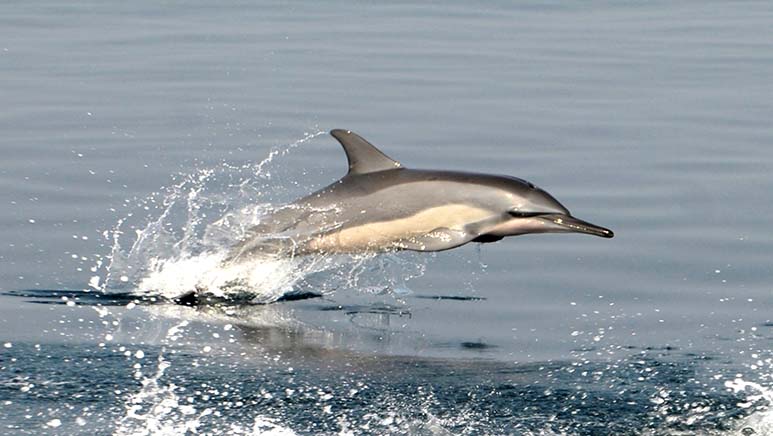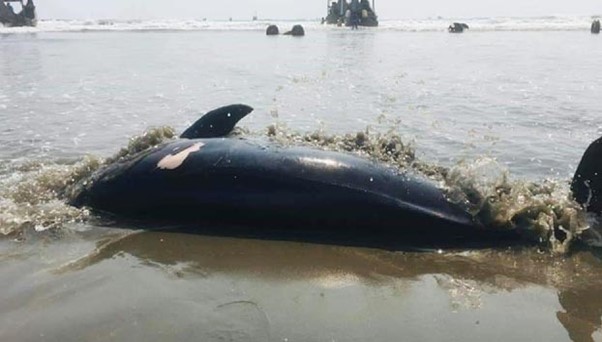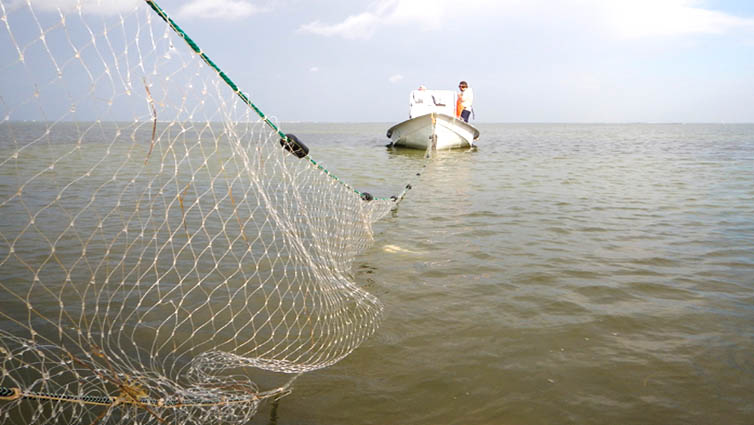
Akkas Ali is a fisherman who resides in Kachua, Bagerhat district of Bangladesh. He has spent over two decades fishing in the Bay of Bengal and has witnessed the death of numerous dolphins. Most of these deaths resulted from dolphins being entangled in fishing nets. Three dolphins have perished in Akkas Ali’s own fishing nets during the past two years.
Bangladesh is home to ten marine and six freshwater dolphin species. Two of the four marine species are critically endangered, others status cannot be determined owing to a lack of data. Platanista gangetica is the sole endangered freshwater species.
However, the dolphin is now vanishing from a large portion of its territory due to factors such as the extensive use of gillnet, habitat degradation, and pollution. In recent months, reports of dead and often partially decayed dolphins washing ashore have circulated on social media and news websites.
“If you examine the images in the newspaper attentively, you will find that many of these beached mammals are decayed. Frequently, a piece of net is wrapped around the dolphin’s nose,” said Rubaiyat Mansur, Wildlife Conservation Society Bangladesh program advisor.

Like humans, dolphins will eventually die if they cannot reach the water’s surface to breathe. The majority of these deaths are a result of entanglement in fishing nets, particularly in gillnets (known locally as fash/sandi/ilish/sayen/current/poka/bhasa/bhadha/khuta jal) used to catch Hilsa fish.
Monirul H. Khan, a lecturer at Jahangirnagar University, said that dolphins stand a significant danger of being entangled in gillnet when they surface to breathe. “It becomes hard for them to escape the fishing nets,” he added.
Jahidul Kabir Jewel, Deputy Chief Conservator of Forests told that, The Wildlife (Conservation and Security) Act of 2012 was issued to protect dolphins. Although there is a provision for a two-year sentence for killing or injuring dolphins, the enforcement is very poor.
Moreover, fishermen and dolphins both choose parts of the bay where fish are abundant, and the current is slower. This has resulted in an increase in the number of dolphins killed as a result of bycatch. Nonetheless, the dolphin is targeted for its flesh and oil, both of which have a medical use.
Gillnet is a small-mesh net composed of monofilament synthetic nylon fiber is extremely popular among fisherman due to its low cost and effectiveness in catching fish.
A manufacturer explained the reasons behind its popularity. “The price of 1,000-metre-long gill net ranges from Tk 600 to Tk 900 (USD 6-9), while other types of nets of the same length cost between Tk 7,000 and Tk 35,000 (USD 70-350),” he added.

Although a 2002 law prohibits the production, sale, import, stockpiling, transport, ownership, and use of all types of gillnet, the situation remains unchanged. The act, however intended to curb the fishing and slaughter of aquatic organisms without discrimination. However, fishermen continue to employ gillnet because they are so effective at capturing vast amounts of fish. The lack of government interventions and law enforcement in the prohibition of gillnet caused the widespread usage of gillnet among local fishermen.
The net captures hilsa and jatka fewer than 25 centimeters in length with minimal effort. It is also a threat to other large or small fish, as well as aquatic creatures such as turtles and dolphins. When trying to escape the net, these organism’s gill, neck, or flipper become entangled with the net.
To address the issue, the government of Bangladesh has launched a 10-year action plan to conserve dolphin species, which includes establishing new areas as dolphin sanctuaries and training of fishermen.
Raquibul Amin, the IUCN’s national representative for Bangladesh, stated, “Community participation via communication and education is required to make the fishing communities aware of the species and its significance.”
Many activities are ongoing, at both the local and national levels, including school campaigns, to promote awareness of the significance of safeguarding the dolphins of the country.
Jaber Bin Abdul Bari
Department of Oceanography, NSTU
